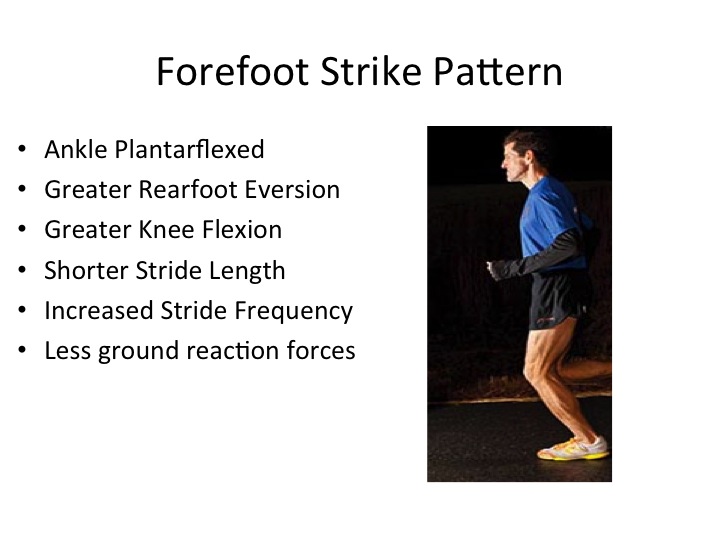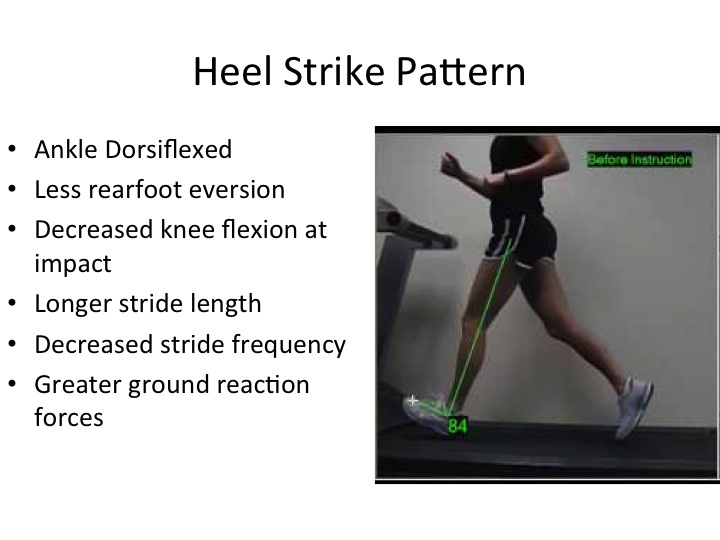Running has increased in popularity over the last decade among both recreational and professional athletes. With this increase in popularity trends have emerged from shoe wear to running mechanics in an attempt to reduce the incidence of running injuries. Unfortunately, the risk of injury in running has not changed much despite this added attention by athletes and clinicians. Tribes have been formed on either side of many debates in running: minimalist shoes vs. Hokas, dynamic vs. static stretching, and heel vs. fore foot strike patterns. Despite the dogmas associated with these tribes the literature does not support an “ideal” running gait. In fact, heel vs. forefoot strike patterns have strengths and weaknesses based on the biomechanics research. The majority of our gait retraining interventions within our Physical Therapy practice involve changing a patient’s running mechanics based on their history, ability, and past or current injuries.
A common theme among gait retraining involves the reduction of time an athlete spends on the ground. Longer strides increase the absorption of ground forces due to the foot being in contact with the ground for a longer period of time. Conversely, a shorter stride and in turn a higher stride frequency decreases the amount of forces placed across the lower extremity. Often changing an athlete’s stride frequency by as little as 5-10% can make a dramatic change in a runner’s gait and symptoms.
A recent article was published looking at the impact of changing a runner’s biomechanics on forces across the knee joint (Willson et al. Scand J Med Sci Sports. 2015). 20 runners were asked to run with a heel and fore foot strike pattern at their preferred step rate over 1 kilometer. The trials were then repeated but athletes were asked to increase and then decrease their step length by 10%. Thus, six trials were completed for each athlete. Consistent with the previous Physical Therapy literature, the authors found decreased knee forces (10-20%) during fore foot strike patterns and a shorter stride length compared to heel striking or longer stride lengths.
This literature supports the utilization of gait training for runner’s with knee pain. Specifically, increasing an athlete’s step frequency can help reduce forces across the knee joint during running. To learn more on how gait retraining can help reduce your pain during running contact your local Physical Therapist.


